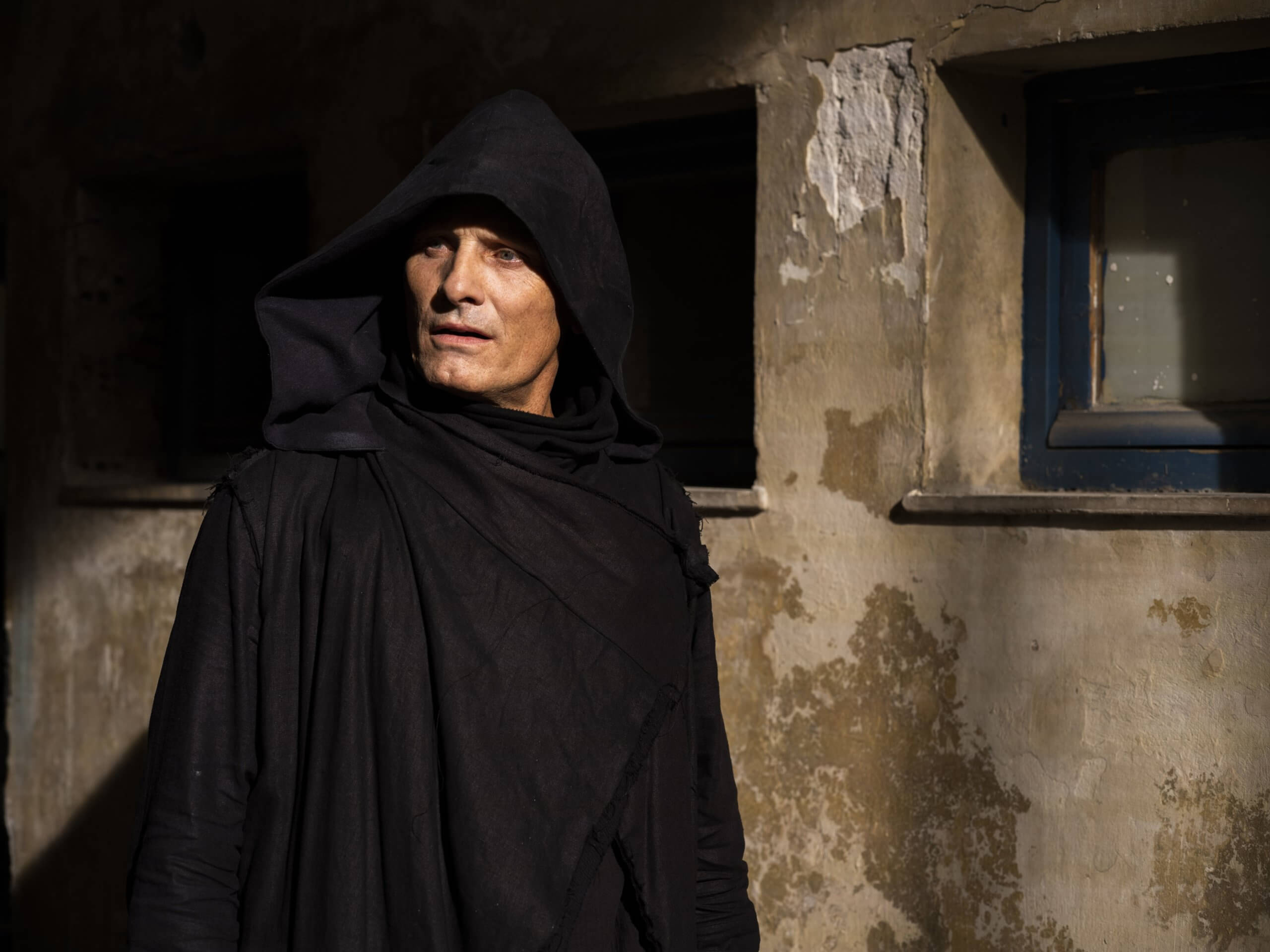Watching a David Cronenberg film should mean something. For decades, the science-fiction auteur pumped out movies that were grand, cinematic statements of their time. In our 21st century remake culture, Cronenberg’s The Fly still stands as an example of how to properly update a piece of media, filling it with a mix of his trademark goo and body-centric philosophy. Videodrome is one of the most prophetic movies ever made, growing more and more relevant as our TVs move from our living rooms to our hands. Cronenberg’s films of the 70s, 80s and 90s always said quite a lot, and said it brilliantly, but what made them special were what they did. These were films, moving images orchestrated to move and excite and disgust. Cronenberg films couldn’t exist anywhere but on the screen — his mind was built to flourish in cinematic terms.
Maybe this is why Cronenberg’s latest effort, Crimes of the Future, comes across as a bit of a disappointment. Throughout the raucously received and beautifully adorned premiere, the question I kept asking myself was a damning one: “why is this a film?” I shouldn’t have to ask this of a movie competing at the Cannes film festival, and I definitely shouldn’t have to ask this of a Cronenberg film. Yet, throughout the middling and shallow hour and forty-five minutes of Crimes of the Future, I had to wonder whether this would work better on the stage, or the page, or simply kept in Cronenberg’s beautifully twisted brain.
Crimes of the Future is a singularly Cronenberg-ian movie, without a doubt. It follows Saul Tenser (Viggo Mortensen) and Caprice (Léa Seydoux), partners in a new kind of performance art built on excising newly-grown organs from Tenser’s body. In the process, they get the attention of the newly-formed National Organ Registry, headed up by Wippet (Don McKellar) and his meek assistant Timlin (Kristen Stewart). Tenser and Caprice’s performances lie at the intersection between violence and sensuality, the perverse and the poetic. They are frightfully grotesque, as you’d expect, but it’s nothing we haven’t seen before. Cronenberg’s horrors have always been filled with a perverse sexuality, dancing on the line between repulsive and attractive. The director’s ability to craft meaningful arguments with bloody assaults on the human body hasn’t dimmed at all. What has dimmed, however, is his ability to unite these arguments with a compelling story, a rich world and a cast of exciting characters.

Crimes of the Future is brimming with good ideas squandered on a story that feels as brittle and weak as its protagonist. The sets feel surprisingly plasticky and unstable, like if I gave them a gentle push the whole world would come crashing down. The scenes are lit flatly and framed in the dullest, most traditional ways possible. Sadly, we don’t even get to see much of the world of Crimes — whether by budgetary restrictions or creative choice, the setting of the film remains mostly unseen to the audience, instead explained to us by the characters in the film. For a David Cronenberg film to tell instead of show is a great disappointment, and one of the biggest indicators that this story would be better served in a different medium.
The story fleshes out very little, leaving the characters, the world and the audience mostly where they were at the beginning of the film. Despite all the surgical performances, and beautiful orchestral music by Howard Shore (which I’ll be listening to the millisecond it reaches streaming services), it almost feels as if nothing takes place during Crimes. The hollow shell of a plot mostly serves to facilitate Cronenberg’s predictably fascinating visual ideas. The pods that help Tenser sleep, the chair that rattles and helps him eat, all of the odd buglike technology Cronenberg invents for his purposes are deeply unsettling and incredibly gratifying as a sci-fi horror fan. Watching the grossest scenes in this film was glorious, a reminder that Cronenberg is indeed back, and in rare form. Unfortunately, these moments are few and far between — most of the film involves long, drawn-out conversations between uninteresting, wooden characters that feel like parodies of themselves.
Much has been made of the gross-out factor in Crimes of the Future. Publications both predicted and, later, confirmed walkouts at the premiere. This kind of myth making has become exhausting to read. Crimes of the Future is far from Cronenberg’s most disgusting film, and even farther from the most disgusting film at Cannes this year — just a day after watching Crimes, I saw the horrifyingly violent Viva La Muerte in the Classics section, which featured bloody torture and brutal violence against animals. As for the walkouts, it’s unfortunately less Cronenberg’s fault and more Cannes’ — I have yet to attend a screening here in which no one has left early. The film is certainly gross, but not enough and in no direction that would make it revolutionary. Crimes of the Future operates as a sort of Cronenberg’s Greatest Hits album — the tragedy of this being that he forgets that his deepest cuts have always been his best.
